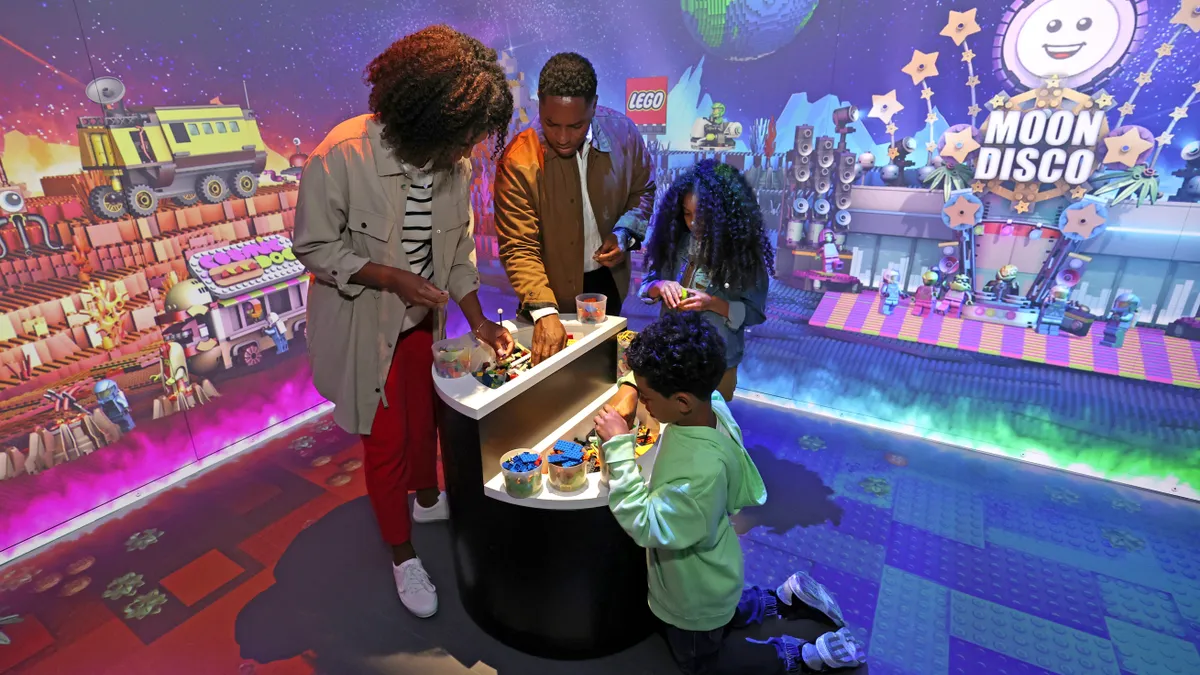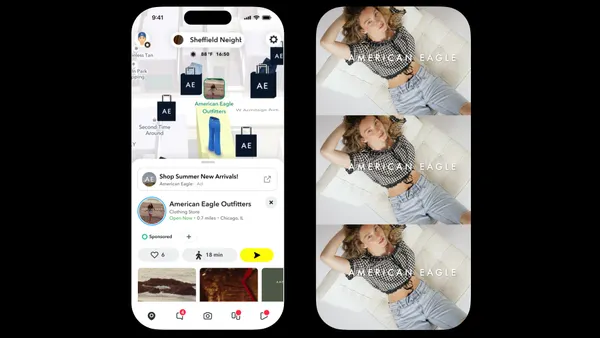Over nearly a century, Lego has built a deeply loyal fan base brick by brick.
But when COVID-19 hit, the company was caught short on one operational issue.
When curbside service suddenly became an essential retail offering in the pandemic era, “we were not ready,” Martin Urrutia Islas, Lego Group’s global head of retail experience, acknowledged at the National Retail Federation’s Big Show annual conference and expo in New York this month. Lego moved quickly to change course.
A lesson learned from the pandemic-era, Islas said during an in-person conference session, is the importance of remaining agile. Another COVID-era takeaway was developing ways to continue offering a great in-store experience when health authorities were urging social distancing and mask-wearing. Touch is a central element of Lego’s in-store experience.
Even before the pandemic, Islas said Lego focused on creating opportunities for discovery and storytelling. That extends to online purchases too. “We actually see the role of e-commerce as an important way to connect and reach to more shoppers,” Islas said.
Lego’s future: New store formats and sustainable practices
The company also sought to connect with shoppers was through the introduction of new store formats in 2021. Lego Group spokesperson Molly Martin told Retail Dive in an email that the new in-store features include:
- A Brick Lab, which immerses people and their Lego builds in a virtual world. Technology brings the walls, floors and ceilings to life with lights, music and sound for an interactive experience
- The Tree of Discovery, a store centerpiece, which is made from 880,000 Lego bricks
- An interactive storytelling table designed for adult Lego fans. The table shows early product designs and behinds the scenes looks at the development process and product designers.
- A personalization studio, which gives store visitors an opportunity to virtually remake themselves in Lego form or as a miniature figure
- Lifesize local, national and international landmarks and characters made of Legos, like the Empire State Building and Marvel superheroes
The new format stores feature a modular, scalable design that will work for Lego stores of all sizes, as well as select third-party retailers.
Lego stays relevant with fans and continues growing thanks to intellectual property partnerships.
“We’re an innovation company. We love creativity. We actually reinforce and communicate creativity. So we do that not only with the products but across many things that we do in the organization.”
Session moderator Lorenzo Soriano, senior vice president of merchant services in the U.S. for American Express, noted that many customers now expect sustainability to be built into the products they buy. In 2032, Lego will be 100 years old. Ahead of that milestone, Martin highlighted some sustainability initiatives.
One initiative is Lego’s increased use of green energy through the use of solar panels and other alternative energy sources for company offices and factories. Another is that furniture used in stores is always sourced locally. Doing this avoids the need to ship furniture over long distances.
Lego also recently introduced paper bags as part of its product packaging. Paper bags are now also the standard to carry home in-store purchases. Also last year, Lego introduced the first brick made from PET, a recycled material.
Lego has about 800 stores globally in 44 countries. As of mid-January, the company had 110 stores in the U.S. More Lego stores are slated to open soon in the U.S., Martin confirmed to Retail Dive.
Stores in Pheasant Lane, New Hampshire and Crocker Park, Ohio, opened in November ahead of the recent holiday season. A new store in Century City, California, opened Friday. And Martin said, “we are also thrilled to share we will have our second store in San Antonio, Texas opening later this summer.”















